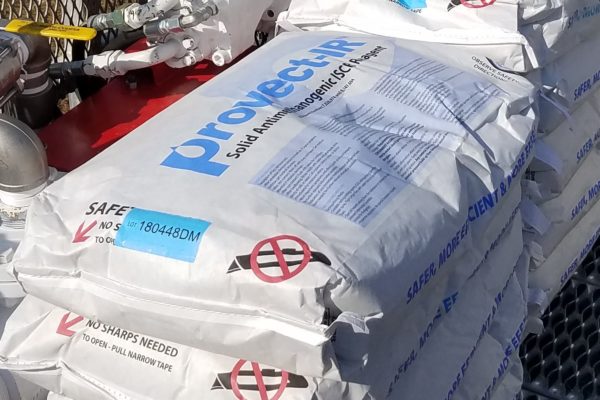Reasons and Technology for Controlling Excessive Methanogenesis during Remedial Actions: Case Studies and Remedial Alternatives
MAEP TECHNOLOGY TRANSFER – Howell, Michigan
At many groundwater remediation sites, excessive production of methane has been observed following the addition of organic hydrogen donors such as (emulsified) oils/lecithin, sugars and conventional ISCR reagents. This is because methanogens are commonly the most ubiquitous indigenous microbes in anoxic aquifer settings. And given that methanogens replicate in 1 to 2 hours (whereas Dehalococcoides spp. for example double in 24 to 48 hours), they often bloom and dominate following the addition of organic hydrogen donors, thereby liberating large amounts of methane gas. There are at least three important consequences of this response:
- Cost – by utilizing hydrogen, the methanogens compete with dechlorinating microbes thus making inefficient use of the amendment (just 20 ppm methane in groundwater represents about 35% “waste” of material – this is fact [not logically debatable] and represents common and tangible detriment);
- Safety – elevated methane concentrations can exceed current and pending regulations of < 1 to <28 ppm in groundwater, and/or <0.5% v/v methane in soil gas (e.g., <10% of the LE); methane gas will induce vapor migration potentially causing indoor air issues of VOCs) and exceed LEL; and
- Performance – rapid growth of methanogens consumes alkalinity while generating acids increasing the potential for aquifer acidification (which may liberate heavy metals such as arsenic causing secondary contaminant issues).
It is clearly important to prevent excessive methanogenesis during a successful remedial action: from a regulatory perspective, public safety issues are paramount; from a property re-use or real estate (Brownfield) developers’ perspective, project delays are costly and can jeopardize an entire program. Provect-CH4® is a new, antimethanogenic (AMR) that is highly relevant to the remediation industry. And Provect-IR® is an antimethanogenic ISCR reagent that uniquely combines multiple sources of nutrient-rich, engineered-release, hydrophilic carbon + ZVI + other reagents along with a source of natural statins as inhibitors of protein biosynthesis and activity of enzyme systems unique to Archaea (i.e., methanogens).
During the presentation the following topics will be discussed:
- What is the Problem with Methane? – as explained thru definition and via project examples, participants will better understand why State and Federal (US EPA; US DoD) agencies have instituted programs to monitor methane production and regulate/guide the remediation industry.
- How can we Control Methanogens? – a detailed, yet easy to understand explanation of the nature and mode-of-action of natural antimethanogenic reagents (AMRs) will be presented, and technologies that specifically govern methanogens will be described
- Cost and Benefit Analysis – project examples (dry cleaning facilities in urban settings; industrial sites impacted by chlorinated solvents) will be used to present cost of using AMRs to actively control methanogenesis. Other case studies will be reviewed where methane production was problematic, including the generation of subsurface fires next to an industrial facility at a site in the Midwest USA immediately following the application of a conventional, non-antimethanogenic EHC® ISCR reagent, and delayed occupancy of a newly developed, high-rise residential complex due to presence of elevated methane in soil gas and CVOCs in indoor air following the use of EHC®.
Anyone involved with the regulation, procurement, design and/or implementation of in situ remedial actions for sites impacted by chlorinated solvents will benefit from the presentation. Controlling methanogenesis during remedial actions is becoming commonplace among seasoned professionals as the positive effects on remedial performance, safety, regulatory compliance and sustainability become well understood.
Contact:
Jim Mueller – Provectus Environmental Products, Inc. | Email: jim.mueller@provectusenv.com

